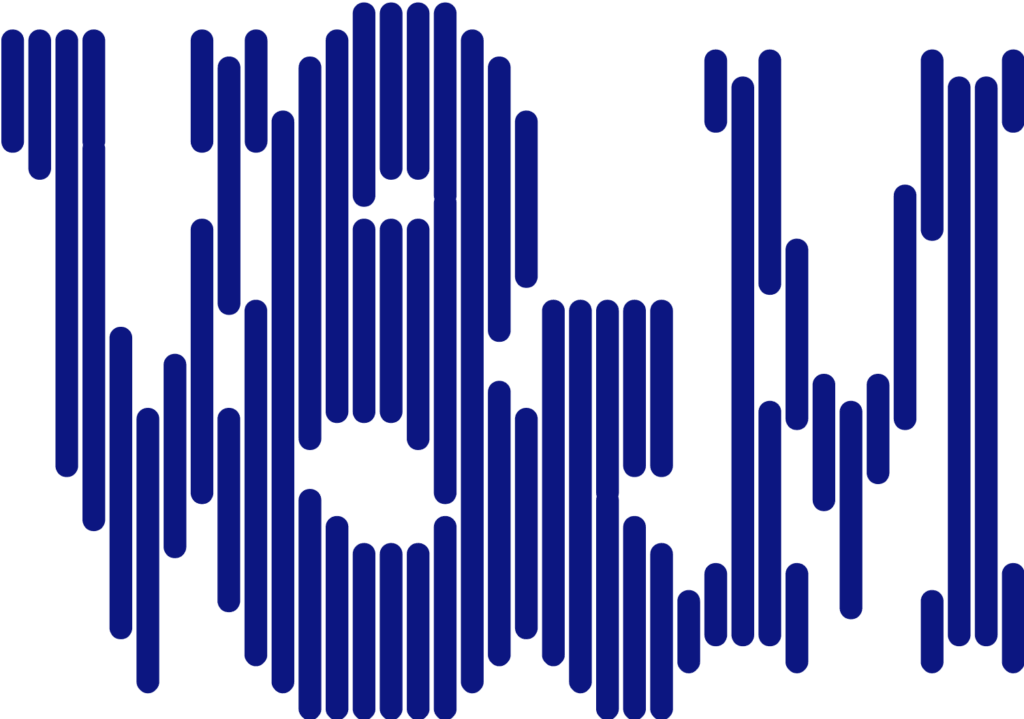
- This event has passed.
- There were no results found.
Talks and Workshops: Rethinking Representation, Between Care and Creation
9:00 a.m. to 6:15 p.m.
📍 Carrefour des arts et des sciences, Université de Montréal
Room C-3061, Lionel-Groulx Pavilion
3150 Jean-Brillant Street, Montreal (QC) H3T 1N8
Free and open to the public
The event takes place in an accessible space. An accessibility ramp is located at 3200 Jean-Brillant Street. Click here to view access instructions.
🎧 Simultaneous translation available all day (English ↔ French)
👐 Québec Sign Language (LSQ, not ASL) interpretation provided all day
_____________________________________________
8:30–9:00 AM: Welcome and coffee
_____________________________________________
9:00–9:30 AM
Opening Remarks
The Festival Team
More information
🎧 👐 Presentation in French. Simultaneous translation (English) and LSQ interpretation provided.
In this brief opening address, the festival team welcomes you and introduces the spirit behind Voice and Media. Why does this festival exist? What observations led to its creation? Who is it for? What desires run through it? You’ll also meet the people and organizations who made it possible. An invitation to fully step into these three days dedicated to dysfluency and its representation.
_____________________________________________
9:30–10:15 AM
Created to stammer: Community, freedom and self-actualisation
Conor Foran, graphic designer and artist committed to the artistic celebration of dysfluency, and the creative mind behind the festival’s visual identity.
More information
About the Presentation
🎧 👐 Presentation in English. Simultaneous translation (French) and LSQ interpretation provided.
How can art and design inform the appreciation of one’s voice? What does dysfluency look (and sound) like under a creative lens? How does community affirm a stammering pride identity?
These questions concern Conor’s practice. He will present his collaborative work (Dysfluent, Making Waves, People Who Stutter Create and Stuttering Commons) in the context of community, freedom and self-actualisation. By utilising a socially engaged practice Conor creates work that resonates with his own stammering identity and that of others.
About the Presenter
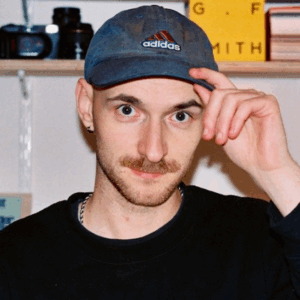
Conor Foran is an Irish artist and designer based in London. As a proud person who stammers, he is interested in how disability intersects with creativity and how art and design can instigate social change. He leads a collaborative, creative practice about stammering called Dysfluent and runs a socially engaged design practice with his partner Bart Rzeznik called Take Courage.
_____________________________________________
10:15–10:30 AM: Break
_____________________________________________
10:30–12:30
Speech-Language Perspectives on Representation
Three talks that connect critical frameworks, research, and clinical practice in speech-language therapy, focusing on the social representation of stuttering in therapy and digital spaces.
10:30–11:15 AM
A shifting landscape: Stammering representation across 3 decades
Sam Simpson, speech-language therapist, Redefining Stammering
More information
About the Presentation
🎧 👐 Presentation in English. Simultaneous translation (French) and LSQ interpretation provided.
Stammering has traditionally been thought of as a speech defect located within an individual. This view is commonly referred to as the medical model of disability. Research from this tradition has looked to understand the cause of stammering with a view to developing therapeutic approaches aimed at reducing or remediating stammering. From this frame, professionals and academics are experts and holders of knowledge; people who stammer the recipients of this expertise and subjects of their assessments, diagnosis and therapeutic interventions.
Historically, the medical model has been the dominant model used to understand stammering however it is not the only one. The social model emerged from within the disability rights movement and offers a counternarrative. It sees the way society is structured as disabling rather than physical impairment itself. The social model highlights society’s norms and values, and, in the case of stammering, demonstrates the physical, structural and cultural barriers people who stammer encounter in a world designed for fluent speakers. From this frame, people who stammer are the experts of their experience and holders of knowledge; professionals and academics are their allies, collaborators and advocates for social change.
Other emerging frameworks for understanding disability include the neurodiversity paradigm and crip theory. The former embraces diversity between individuals rather than distinguishing between the impaired and the able-bodied. People are, therefore, empowered to see their stammering as a natural variation in speech. The latter seeks to disrupt, transform and subvert in order to unsettle entrenched beliefs and make anew. From this frame, people who stammer are invited to find positive meaning in their speech. As stammering is reclaimed as a legitimate and valuable means of communication in its own right, a radical and generative conversation around stammering identity and culture emerges. People are taking pride in their stammering, and this is being celebrated in many creative ways: through prose, poetry, photography, music and art.
These new representations of stammering pose challenging questions of the foundational theories upon which stammering therapy is historically rooted. The language, hierarchical structures, power dynamics and even purpose of stammering therapy and research are called into question. In this presentation Sam will reflect on the key influences in stammering representation that have shaped her understanding of stammering, the role of the speech and language therapist and the scope of stammering therapy across her 30-year career.
About the Presenter
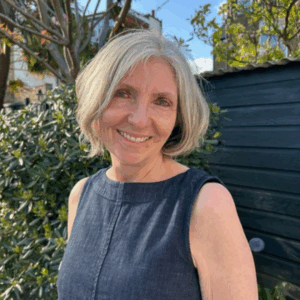
Sam Simpson is a speech and language therapist, person-centred counsellor, supervisor and trainer living in London, England. Sam has a particular interest in critical disability studies, stammering activism and what stammering can teach us about ourselves and the world. Together with Patrick Campbell and Christopher Constantino, Sam co-edited Stammering Pride and Prejudice: Difference not Defect in 2019. They are currently collaborating on the sequel. Sam is a founder member of Stuttering Commons, an international collaboration aiming to deconstruct, unsettle and bend fluency privilege.
11:15–11:45 AM
Visuals, voices, and visibility: Representation in social media and podcasts for people who stutter
Dr. Erik X. Raj, speech-language therapist, associate professor, Monmouth University
More information
About this Presentation
🎧 👐 Presentation in English. Simultaneous translation (French) and LSQ interpretation provided.
Social media platforms and podcasts have become powerful tools for people who stutter (PWS) to express themselves, connect with others, and challenge stereotypes about communication. This presentation explores how visual and audio-based media support visibility and community for PWS in meaningful ways.
Dr. Erik X. Raj will share findings from his recent study on the @juststutter Instagram account, an art-driven profile created by a person who stutters. The talk will highlight how PWS discover and engage with this account, and what their experiences reveal about the importance of identity-centered content on digital platforms. Participants will learn how visuals can serve as a bridge to reflection, dialogue, and connection. The session will also explore the growing role of podcasts as platforms where PWS can share stories, listen to diverse perspectives, and feel represented in authentic ways.
Together, these examples show how digital platforms offer more than entertainment—they create space for meaningful participation, emotional insight, and community-building. The presentation will conclude with suggestions for how clinicians, educators, and advocates can thoughtfully incorporate these tools into their work with PWS, using them as starting points for connection, conversation, and growth.
About the Presenter

Dr. Erik X. Raj holds a Certificate of Clinical Competence from the American Speech-Language-Hearing Association and is a practicing speech-language therapist who collaborates with individuals experiencing various communication challenges. He currently serves as an associate professor in the Department of Speech-Language Pathology at Monmouth University in West Long Branch, New Jersey, United States, where he also directs the Meaningful Digital Experiences Research Lab.
Dr. Raj earned his Ph.D. in Communication Sciences and Disorders, with a concentration in digital technology, from Wayne State University in Detroit, Michigan. He regularly presents interactive workshops, both nationally and internationally, demonstrating how speech-language pathologists can integrate digital technologies to engage and educate clients. In addition to creating dozens of speech therapy-related mobile apps and video games, he consults with numerous educational technology companies on research and development to advance innovative tools for speech and language therapy.
11:45–12:00 PM
Je je je suis un podcast: seeing ourselves, learning, sharing
Judith Labonté, speech-language therapist, Clinique spécialisée en bégaiement et bredouillement
More information
🎧 👐 Presentation in French. Simultaneous translation (English) and LSQ interpretation provided.
Judith Labonté is a speech-language therapist, trainer, and clinical coordinator at the University Clinic for Speech-Language Therapy and Audiology at the Université de Montréal. She co-hosts Je je je suis un podcast with Geneviève Lamoureux, a doctoral candidate in speech-language therapy and an adult who stutters. This entirely French-language podcast offers a unique space to talk about stuttering without taboo. Its goals are to inform, raise awareness, offer diverse perspectives on stuttering and speech-language therapy, and foster a better understanding of the lived experiences of people who stutter (PWS).
A study conducted by the hosts and their collaborators (Lamoureux et al., 2023) evaluated the podcast’s impact through a survey of 79 respondents (mostly PWS and speech-language therapists from Québec and France). Results showed improved access to information about stuttering in French and a deeper understanding that therapeutic success is not limited to fluency. Among speech-language therapists, 62% reported having changed their clinical practices. Among PWS, 75% reported greater acceptance of their stuttering.
This presentation will share concrete examples of how the podcast can be used as a clinical resource. Whether to support the self-efficacy of PWS, inform clinical reflection, or open discussions about lived experience, Je je je suis un podcast is a relevant and accessible tool for enhancing interventions with people who stutter.
About the Presenter
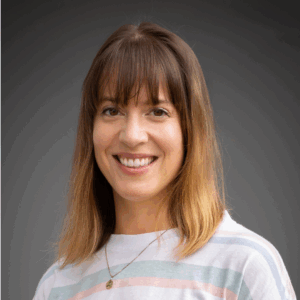
Judith Labonté is a speech-language therapist who holds a professional master’s degree from the Université de Montréal. Since 2008, she has been working with people who stutter or clutter, developing her expertise notably in pediatric rehabilitation centers, private practice, and at the intensive therapy camp run by the Association des jeunes bègues du Québec (AJBQ). She is the founder of the interdisciplinary online group intervention program for adults who stutter, offered by the Association bégaiement communication (ABC) since 2021.
She is a clinical coordinator at the School of Speech-Language Therapy and Audiology at the Université de Montréal, co-host of the podcast Je je je suis un podcast, and co-lead of the Stuttering and Cluttering Community of Practice (Communauté de pratique en bégaiement et bredouillement), which brings together more than 250 speech-language therapists across Québec. In 2024, she founded the Specialized Clinic for Stuttering and Cluttering (Clinique spécialisée en bégaiement et bredouillement), the first interdisciplinary clinic dedicated to supporting people of all ages who stutter and/or clutter.
12–12:30 PM: Q&A session
_____________________________________________
12:30–1:45 PM: Lunch break – bring your own lunch or explore nearby restaurants!
_____________________________________________
1:45–2:45 PM
“Lou”: an immersive and participatory virtual reality experience about autism
Martine Asselin, producer and director
More information
About the Presentation
🎧 👐 Presentation in French. Simultaneous translation (English) and LSQ interpretation provided.
The virtual reality work “Lou” offers a unique sensory immersion that allows viewers to experience the sensitivities of an autistic character. Created by Martine Asselin and Annick Daigneault, the piece aims to raise public awareness about the lived realities of autistic people and to foster an empathetic understanding of their experiences. A conversation with Martine Asselin about the media representation of difference, the inclusive co-creation process behind the work, and the use of immersion to embody another reality.
✨ Would you like to experience it for yourself? The work will be available for trial during the evening cocktail (see below in the schedule).
About the Presenter
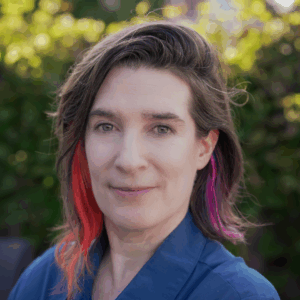
Martine Asselin is a committed filmmaker and digital artist with 25 years of experience in fiction, documentary, animation, and virtual reality. Driven by insatiable curiosity, she blends narrative and formal languages to explore contemporary social issues, with a focus on innovation and human connection. Her work celebrates resilience and human diversity.
_____________________________________________
2:45–3:15 PM: Coffee Break
_____________________________________________
3:15–4:15 PM
From Dysfluency to Dysfluent Approaches in Research-Creation by and for People with Disabilities
Véro Leduc, Ph.D., and Sarah Heussaff, Ph.D., Canada Research Chair on Cultural Citizenship of Deaf People and Cultural Equity Practices
More information
🎧 👐 Presentation in French. Simultaneous translation (English) and LSQ interpretation provided.
In the form of a dialogue between Véro Leduc and Sarah Heussaff, this conference-conversation draws on the concept of dysfluency to develop a reflection on the importance of dysfluent approaches to knowledge production, particularly in the field of research and research-creation. The Voice and Media Festival presents dysfluency not as the pathological irregularity of a language to be corrected, but rather as a space of embodiments and atypical representations of communication. Dysfluency thus reinterpreted can be envisioned as a spectrum of diverse embodiments from which emerge multiple ways of being in the world, of understanding it and communicating it. From these manifestations considered “non-normative” also arise critical reflections on norms, and these reflections likewise encourage a sense of pride and a spirit of epistemic community.
This is an observation we also make as disabled researchers within our respective and collaborative research. By examining various research-creation projects initiated by our subjective and embodied experiences of realities considered dysfluent or intermittent (here, Deafness, chronic illness, neurodivergence and learning disabilities), we propose to discuss what these experiences offer as new avenues in research and research-creation. They encompass themes as well as experimental methods and ethics, or the aesthetics and mediums explored. These research-creation projects include our two doctoral research projects, our exhibition and research-creation projects conducted with disability communities, and notably those developed within the Canada Research Chair on the Cultural Citizenship of Deaf People and Cultural Equity Practices (UQAM). In doing so, we wish to reflect on how Deaf and disabled cultures and their manifestations, often considered non-normative or irregular, can disrupt and disturb traditional forms in research and give rise to alternative methods of knowledge creation and original forms of dissemination. The closing conference of the day will be punctuated by the sharing of video excerpts allowing for the appreciation of the works and research-creations cited. First conducted between the two speakers, the conversation will then open to the public, invited to participate in the reflection on the importance of new paradigms in research and research-creation in order to build knowledge from not only the perspectives, but also the ways of being in the world of people from the disability community.
About the Presenters
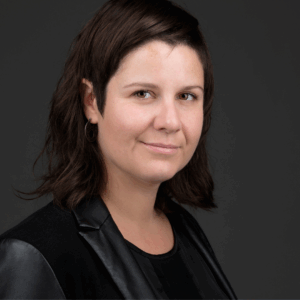
Multidisciplinary artist and committed researcher, Véro Leduc holds the Canada Research Chair in Cultural Citizenship of Deaf People and Cultural Equity Practices. She is co-director of the Disability, Deafhood and Innovations Laboratory (HSI Lab) and a member of CELAT (Centre de recherche Cultures Arts Sociétés). A professor in the Department of Social and Public Communication at the Université du Québec à Montréal, she teaches in the Cultural Action program as well as in the Disability and Deafhood: Rights and Citizenship program, which she co-founded. The first Deaf university professor in Quebec, her work focuses on the artistic practices of Deaf and disabled people in Canada, Deaf music, and the cultural citizenship and equity practices of Deaf people. In 2020, she received the Governor General’s Medal for her outstanding work in breaking down barriers to social inclusion and strengthening access to university and culture for Deaf and hard of hearing people.
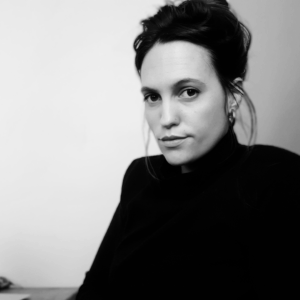
Sarah Heussaff (Ph.D.) is a researcher and curator specializing in disabled social and artistic movements. Through her research, projects, and the exhibitions she takes part in, she explores the development of a crip-feminist curatorial practice. She is also a lecturer in the Disability and Deafhood program and at the Institute for Feminist Studies (IREF) at the Université du Québec à Montréal (UQAM), where she initiated the course “Feminisms, Anti-Ableism, and Body Diversity.” She is Co-Coordinator of the Canada Research Chair in Cultural Citizenship of Deaf People and Cultural Equity Practices, and Coordinator of Laboratoire Handicap, Sourditude et Innovations (UQAM).
_____________________________________________
4:15–6:15 PM: Opening Cocktail and Immersive Virtual Reality Experience – Lou (Room C-2081)
This cocktail reception will be a chance to connect with fellow festival participants and guests. You’ll also have the opportunity to experience Lou, a virtual reality work introduced earlier by Martine Asselin, offering a sensory immersion into the perspective of an autistic character.
